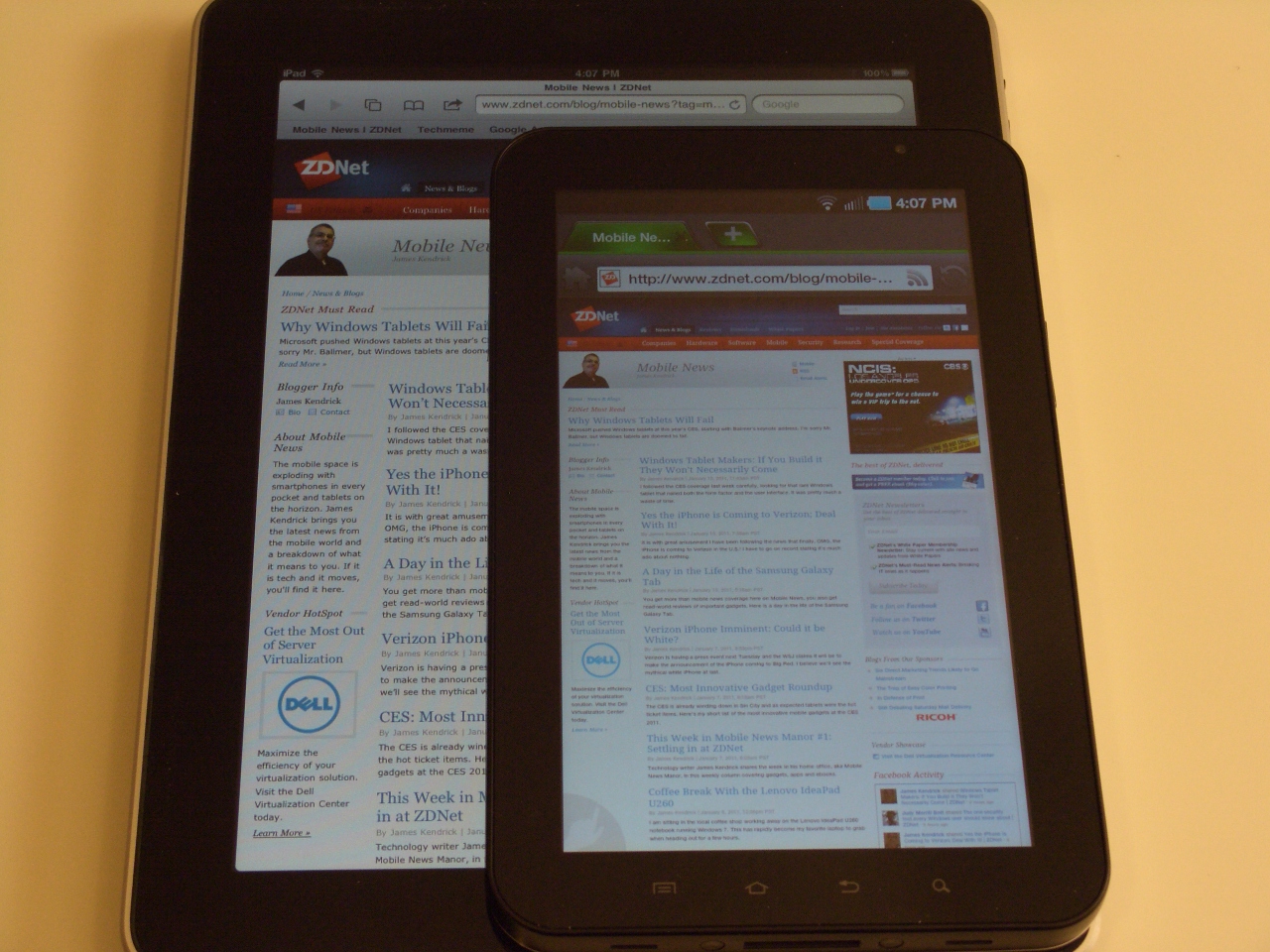Perfect tablet doesn't exist: One size doesn't fit all


The iPad started the tablet craze with its unique 9.7-inch display that fell between the small smartphone screen and the bigger notebooks. This size was a good fit for displaying web pages in the browser, a frequent task performed on the tablet. Samsung stepped in with the 7-inch Galaxy Tab, and the smaller screen appealed to many consumers (myself included). This size tablet is more mobile than the iPad, and comfortable to use in the hands for extended periods. Though smaller, the 7-inch screen displays enough on the screen at a time to be productive.
The iPad has been so successful that OEMs were quick to produce 10.1-inch tablets, roughly the same size as the slate from Apple. These tablets are a little bigger than the iPad, and typically have a widescreen format as opposed to Apple's 4:3 aspect ratio. These devices are thus narrower than the iPad but slightly longer in the portrait orientation. The newly announced Samsung Galaxy Tab 10.1 and the Motorola XOOM are both this size. This size appeals to those who believe that bigger is better for displays.
HP, LG and Samsung are introducing another size in the mix, the 8.9-inch form. This is close to the size of the iPad's 9.7-inch display, but a bit more portable. This size will appeal to those who prize mobility above other criteria, yet find the 7-inch display to be too small.
At the other end of the spectrum, some 12-inch tablets will hit the market soon. I believe these will appeal to fewer prospective buyers than the other sizes, due to the loss of portability the bigger form provides. Some will like the bigger, near laptop size display, but most won't. They will be more expensive than the others, too.
You can make an argument that the Dell Streak with its 5-inch screen is a tablet, but I classify it in the PDA category. I don't think devices slightly larger than a phone count as tablets, although I am sure some folks will disagree.
Those new to the tablet world, and that is just about everyone, must decide which size screen fits their needs for purchase. My experience testing many different tablets has driven home the importance of this decision, and not making the right one can result in an unhappy experience. It is a good idea to try out tablets of different sizes before making a purchase. This will be possible once retailers start carrying different models in stores, which should happen soon.
No matter your platform preference, make a trip to the Apple store and try the iPad for size. Then hit up a Verizon store and try the XOOM, which is a little bigger. Verizon also carries the 7-inch Galaxy Tab, so you can also test out the smallest of the bunch. The purpose is to get a feel for size before making a purchase, which will go a long way to making that a happy experience. I believe most buyers will be happiest going with the smallest form that provides the fullest user experience, and that varies from person to person.
Related coverage:
- The next tablet battleground: The enterprise
- Samsung reboots tablet strategy and beats Apple on price
- Sprint unveils HTC Evo 3D, Evo View 4G tablet
- Amazon launches Android Appstore: Trial balloon ahead of a tablet?
- RIM's BlackBerry PlayBook prepped for April 19 launch
- Microsoft throws down the gauntlet at Android tablets